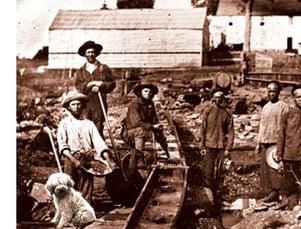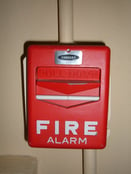Read Time - 6 Minutes

I am getting dumber every day.
On one hand, my brain is being worn down like a #2 pencil in trig class, a slow and inevitable degeneration as my synapses dry up. At the same time, the aggregate knowledge of the world around me continues to soar. The result is a widening gap between what I know (or think I know) and all there is to know, ya know?
To cope with this expanding knowledge gap, I have some choices. If I need the answer to a question, the solution to a problem, or the information to satisfy a particular curiosity, I there's lots of things I can do.
Do This
Rely on my own knowledge and experience. As humans, this is our default mechanism. But also as humans, we’re fallible and limited in our capacity to know and remember, so there’s a fair measure of unreliability there. Not so long ago, our species knew and accepted that the universe was centered around our planet. And that our planet was flat. Oops.
Ask a teenager. Teenagers claim to know everything. In this case, I’m referring to a specific teen: Google (b. 1998, age 18.) A staggering volume of information is readily accessible. To emphasize this point, I Googled how many Googlers are Googling at any given moment. According to Google, there are an average of 2.3 million searches on Google every second. But where is this data coming from, and how reliable is it? When it comes to teenagers, I maintain a raised brow of skepticism. I don’t want to mistake information as knowledge. (For the record, Wikipedia doesn’t even have its driver’s license yet.)
Consult with or hire a pro. Voila! I can close the knowledge gap simply by deducting the things I need to know from the equation! I’m pretty handy and generally capable, but I don’t fix things like plumbing, roofs or teeth. There are projects and tasks that are DIY, and others that I would do more harm than good. For those, I hire someone who is trained and experienced.
Knowing what I don’t know and seeking help from others has made my life a whole lot easier. And, bottom line, it reduces my net cost in terms of money, time and anguish.
But Not That
When it comes to selling custom awards—or anything, really—shouldn’t that same principle apply? As a promotional products sales professional, you are surrounded by nearly 4,000 suppliers that are experts in their respective fields. Don’t be afraid to ask. And have confidence that no one thinks you’re dumb for asking. As suppliers, it’s what we’re here for.
Over the course of the last 26 years, I’ve learned there’s a long list of how to sell custom awards—far too many to outline here. So instead, I’ll bake it down to a much shorter list of what not to do.
1. Pan for gold with art renderings

We are often called on to furnish renderings of concepts to present to end customers merely on speculation. The truth is, speculators are gamblers, hoping a random shot will hit a target.
Think of the 1849 Gold Rush in northern California as an example. Prospectors risked everything for a shot at fortune. For a vast majority, the gamble didn’t pan out (which is where that expression comes from.) Meanwhile, the fledgling mining industry hatched a number of notable entrepreneurs—Philip Armour, John Studebaker, Henry Wells & William Fargo among them. These industrialists built their businesses on the needs of their customers. Many of those businesses are still around—you may have heard of the durable work pants invented by Levi Strauss, for instance.
Digging holes and hoping to find gold (i.e. guessing) is not a legitimate sales tactic. It will only fatigue you and your suppliers—and eventually irritate your would-be customers. It’s a potentially costly gamble, and I’ve never seen it actually work.
2. Seek good quotes for bad designs

I would be retired and living on an island bearing my name if I could have banked the amount of resources spent by distributors and end-clients designing their own custom awards. Staircases drawn by M.C. Escher are really cool looking, but can’t be built in three-dimensional space. Consult with or hire a specialist that can steer you clear of spatial and material conundrums before your client embarks on an endless journey along their own staircase to nowhere.
3. Pull the false alarm trick

If you’ve ever been in a hotel when the fire alarm goes off at 3:00 a.m., then this one will make perfect sense. Don’t put your supplier partners under the duress of quoting in one day, then go radio-silent without proper feedback. Our company works hard to qualify and follow up leads, yet a full 10% are never heard from again. Spending your suppliers’ resources like your own will ensure you get their best effort every time…and they’ll be there to help when there’s a real fire.
4. “Buy this!”

Let’s say you have a customer who wants to buy a car. Do you show them a Lamborghini? Probably not until you’ve properly qualified their needs. And budget. And insurance coverage. An awards customer is the same. They’re not ready for the product until you’ve spent some time discussing their objectives. How many? How much? and When? are good questions to start with, and the conversation builds from there.
5. Demonstrate “yes-button” impulse control issues

Can this be delivered in two weeks? YES!
Can you tell me the atomic mass of tungsten? YES!
Can you tell me the meaning of life? YES!
Can you—YES, YES, a thousand times YES!!!
As accommodating as “Yes!” is, it can stand in the way of the truth. As much as we want to please others, it’s okay to say “I don’t know, but I know who does.” It fosters trust with customers and suppliers alike, and avoids the scenario of having to reset your client’s expectations.
Tungsten’s atomic mass is 183.84, by the way. As for the meaning of life, I advise consulting with Monte Python on that one.
So Go Do It
When it comes to building your business, you can go it alone and rely on what you know or think you know. You can take your chances that the technology at your fingertips is reliable and faithful to your purpose. Or you can turn to the suppliers you know (or should know) and trust them as experienced specialists.
To me that’s a no-brainer—to which I am increasingly over-qualified.
Hero Image Photo Credit: The Hollywood Gossip
Gold Rush Photo Credit: The Gold Rush of 1849
Penrose Staircase Photo Credit: Wired.com
Fire Alarm Photo Credit: Wikipedia
Car Photo Credit: LatestAutoCar.com
 Dave Miller is VP of Sales & Marketing at Bruce Fox, Inc. and a professional writer by virtue of the fact his company is paying him to write this blog. He once insisted on being paid in actual nickels when he won a $1,900 jackpot on the five-cent slots—until he was told 38,000 nickels weigh over 400 pounds. The goal of his blog is to “edu-tain” (educate + entertain) promotional products distributors, with a focus on custom work. Dave also finds it very awkward to write about himself in the third person.
Dave Miller is VP of Sales & Marketing at Bruce Fox, Inc. and a professional writer by virtue of the fact his company is paying him to write this blog. He once insisted on being paid in actual nickels when he won a $1,900 jackpot on the five-cent slots—until he was told 38,000 nickels weigh over 400 pounds. The goal of his blog is to “edu-tain” (educate + entertain) promotional products distributors, with a focus on custom work. Dave also finds it very awkward to write about himself in the third person.








